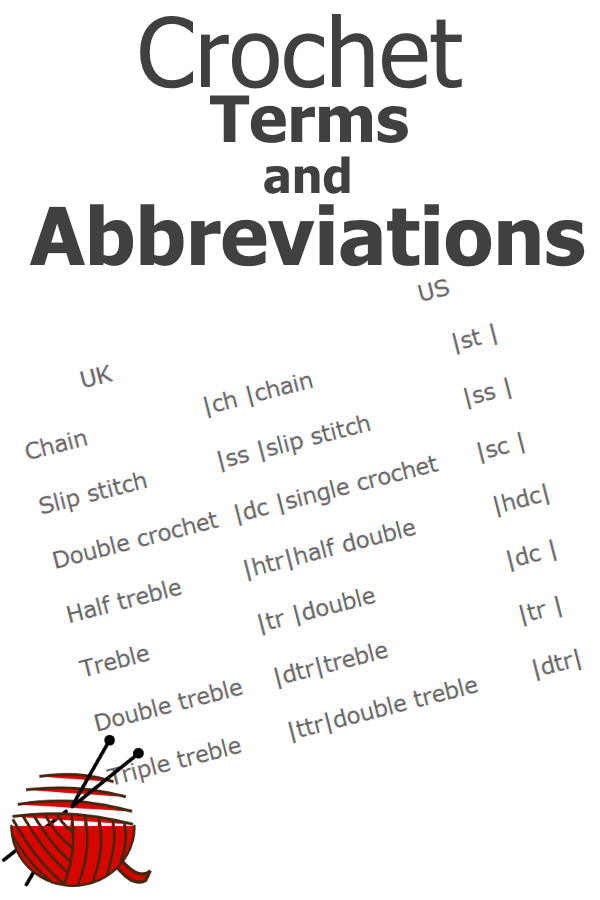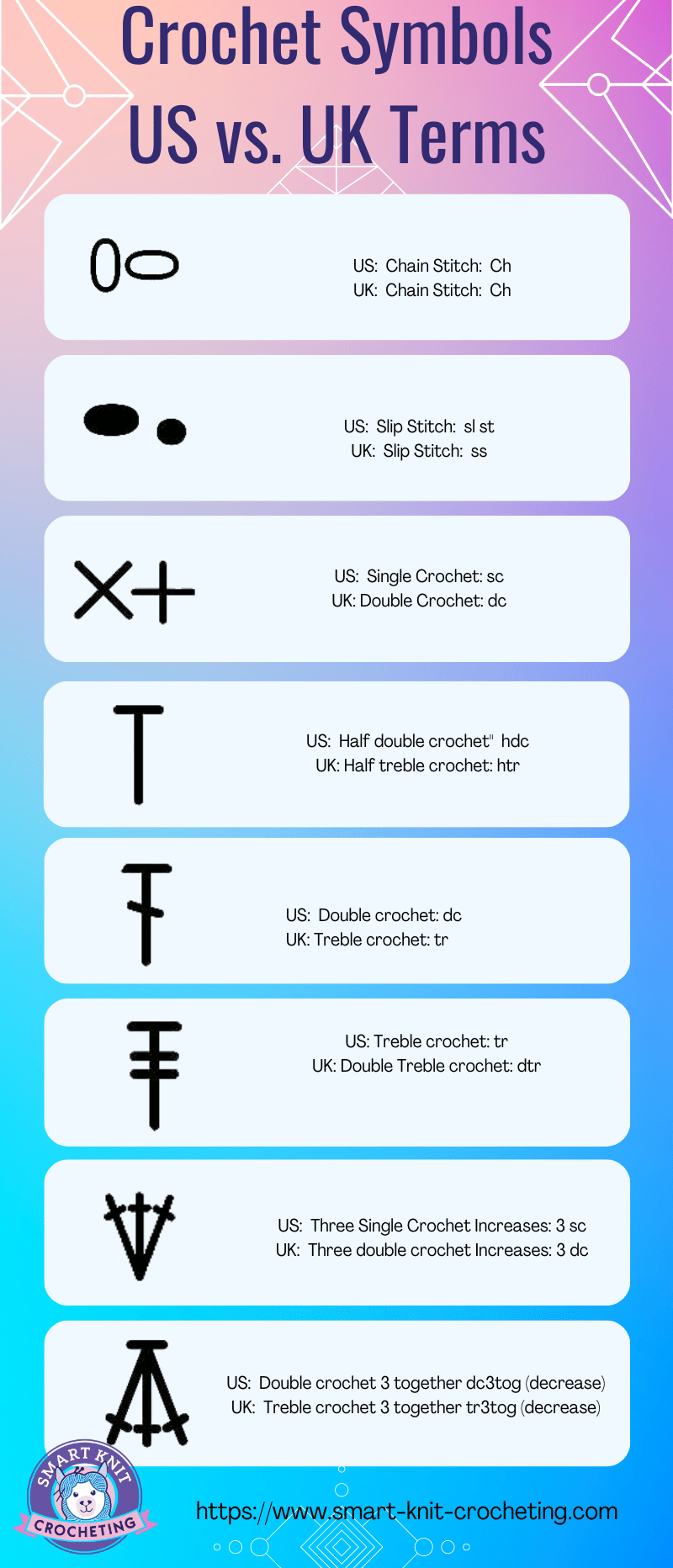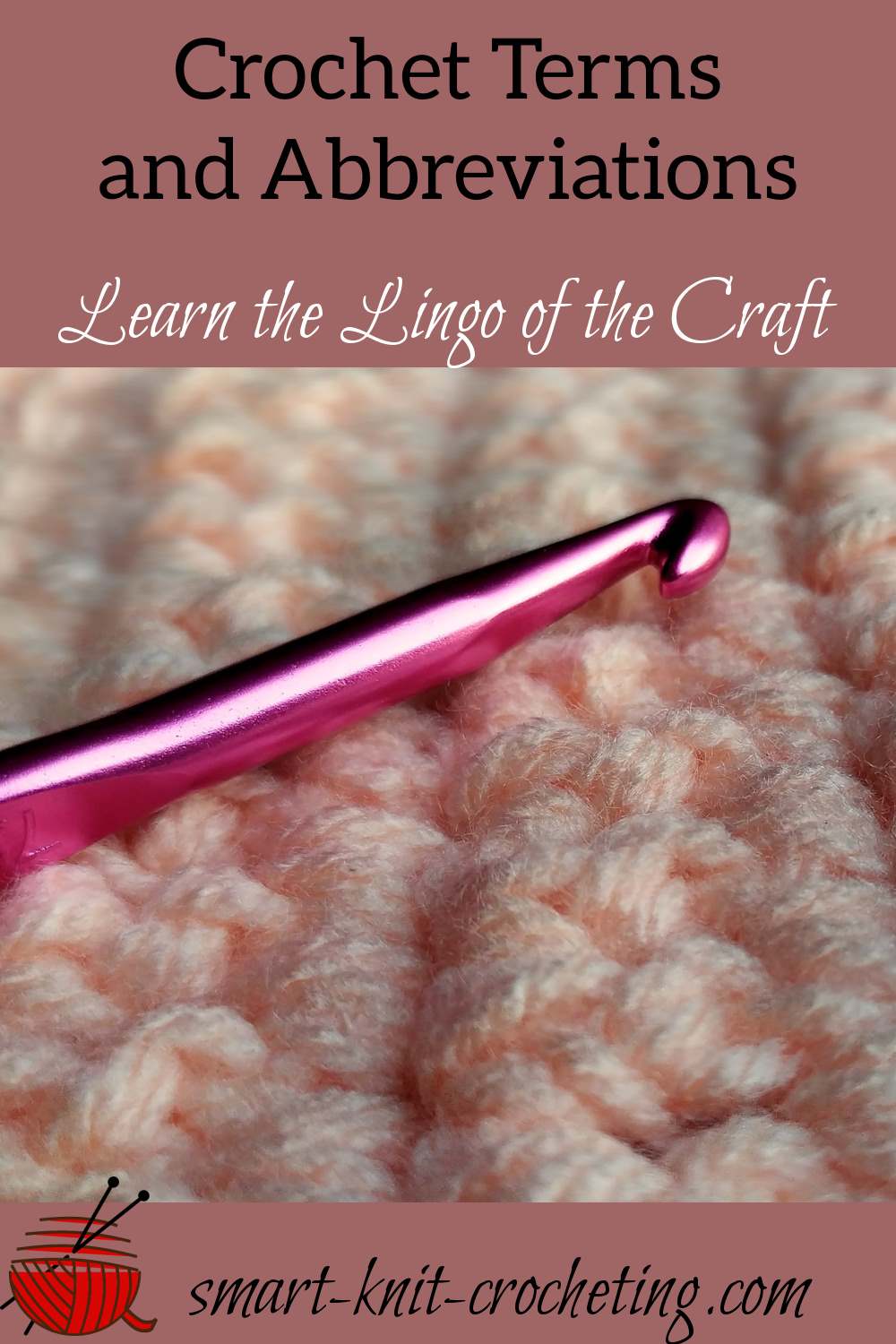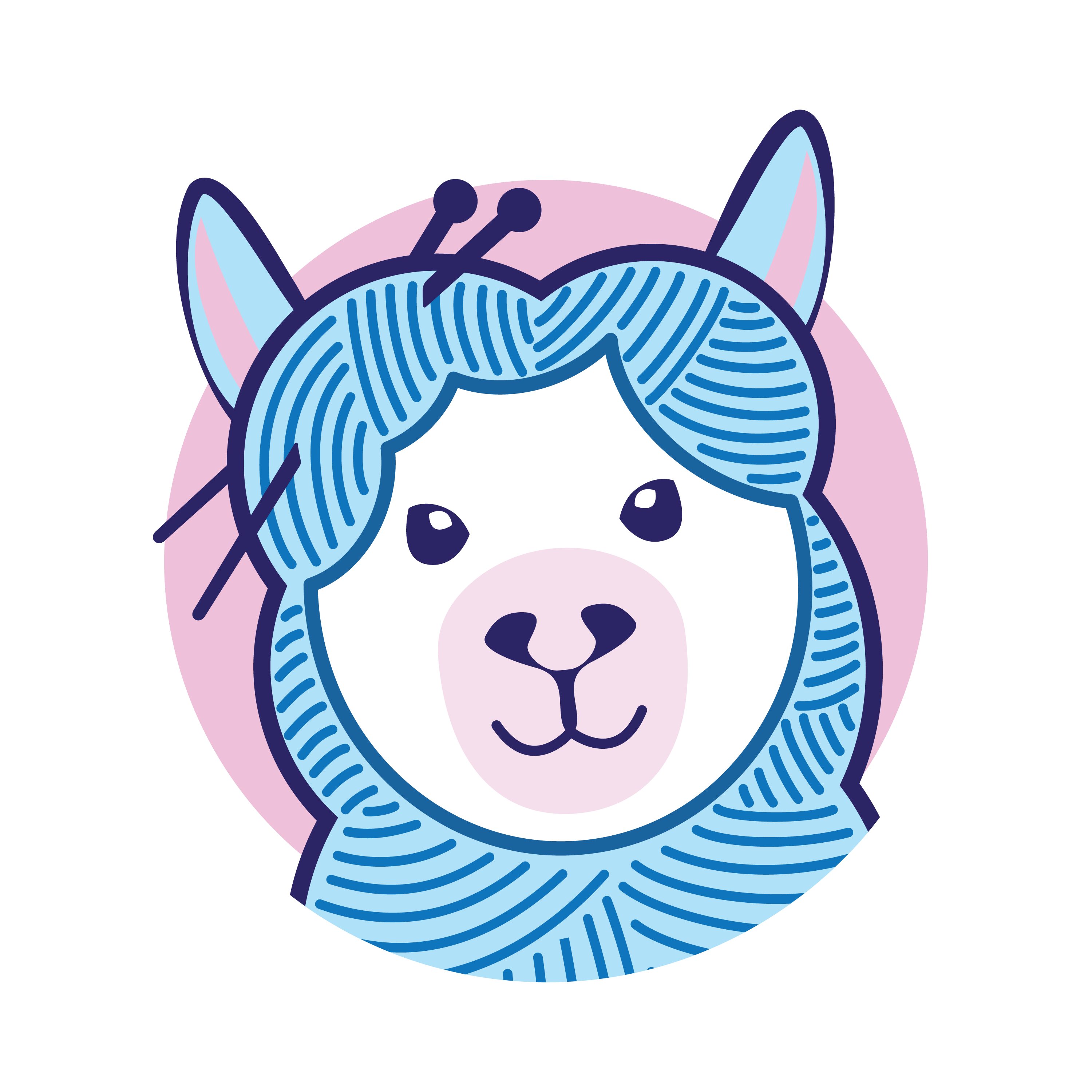- Home
- How to Crochet
- Crochet Terms and Abbreviations
Crochet Terms and Abbreviations: Must Have Beginners' Guide
Crochet Terms and Abbreviations, by Janice Jones
If you are new to crocheting, you may be overwhelmed by the number of abbrevations and symbols you encounter. I know I was and worse yet, I found an entire vocabulary of jargon that didn't make much sense to anyone new to the hobby.
You may start crocheting without knowing what all those terms and abbreviations mean in patterns, but once you get some experience under your belt, you will want to go further and explore all the beautiful designs out there.
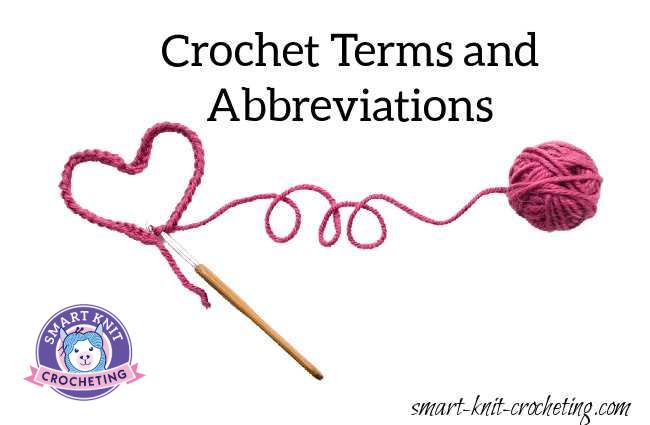 Crochet Terms and Abbreviations
Crochet Terms and AbbreviationsTo be able to read a pattern and follow the directions, you will need to know some of the abbreviations and symbols used.
Some patterns are written entirely in English using abbreviations in the instructions. Other patterns make use of a symbol chart. Each symbol represents a different type of stitch or command.
Until you are completely comfortable with all the symbols, I recommend to keep a chart handy to refer to as needed.
This page outlines all the usual (and some unusual) terms that you'll come across while you develop your skill.
Crochet terms and Abbreviations: Basic Crochet Stitch Abbreviations Used in the US and the UK
Some stitches are named differently whether you are reading a US or UK pattern. This set of conversions can be used either way to convert US to UK terms, or the other way around.
US/Canada
Single crochet: sc
Double crochet: dc
Half double crochet: hdc
Treble or Triple Crochet: tr
Slip Stitch: ss
Chain: ch
Double Treble: dtr
Yarn Over: YO
UK
Double Crochet: dc
Treble Crochet: tr
Half Treble Crochet: htr
Double Treble Crochet: dtr
Slip Stitch: ss
Chain: cc
Triple Treble: ttr
Yarn Over Hook: YOH
Crochet Terms and Abbreviations
These are common terms you will find as you begin to read the instructions in a pattern.
*or {} or [] or (): repeat the part between the * or bracket
alt: alternate
approx: approximately
beg: beginning
bet: between
BL-BLO: back loop/back loop only: You work into the back loop of the stitch instead of both loops
BP: back post
BPdc: Back Post Double Crochet
CC: contrasting color
ch sp: chain space
ch(s): chains
CL: cluster
cm: centimeter
cont: continue
dc: double crochet
dc2tog: Double crochet 2 together
dec: decrease
FL or FLO: front loop or front loop only
FP - front post stitch
FPdc: Front Post Double Crochet
foll(s): foll(s) follows
gr: group
inc: increase
lp: loop
MC: Main Color
nxt: next
pm: place marker
prev: previous
ps or puff: puff stitch
r: row
rem: remaining
rep: repeat
rnd: round
RS: right side
sc: single crochet
sk: skip
sl: slip
sm or sl m: slip marker
sp: Space
ss or sl st: slip stitch
st(s): stitches
st ch: starting chain
tc: treble crochet
tr tr: triple treble
tc2tog: treble crochet 2 together
t-ch: turning chain
tog: together
yo: yarn over
yoh: yarn over hook
WS: wrong side
Crochet Terms and Abbreviations: Crochet symbols and their meanings
As patterns become more complicated, symbols are often used. The big advantage with the symbol charts is that they take up less space and you can immediately have a visual idea of what the product may look like. Most patterns will have a key or reference, so don't try to memorize the symbols here.
You may encounter other symbols such as arrows or numbers. There may be additional symbols for colors and where one color is joined with another. If you are working in more than one color, it does make it easier if the pattern is printed in the various colors so you can see where one ends and the next one picks up. Here are a few for illustration purposes only, but you can download a pdf from the Craft Yarn Council of many more symbols.
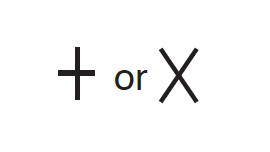 Single Crochet (sc) in the US
Double crochet (dc) in the UK
Single Crochet (sc) in the US
Double crochet (dc) in the UK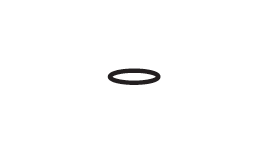 Chain Stitch
Chain Stitch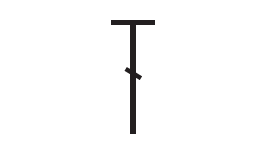 Double Crochet (dc) in the US
Treble Crochet (UK)
Double Crochet (dc) in the US
Treble Crochet (UK)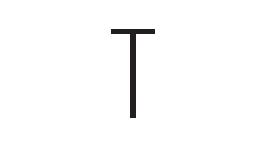 Half Double Crochet (US)
Half treble crochet (UK)
Half Double Crochet (US)
Half treble crochet (UK)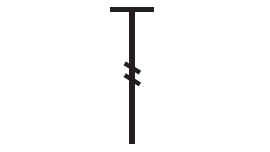 Treble or Triple Crochet (US)
Double Treble Crochet (UK)
Treble or Triple Crochet (US)
Double Treble Crochet (UK)These symbols are but a few of the many different types of stitches that can be represented with symbols. For a more comprehensive glossary of symbols I recommend checking out a few good crochet handbooks.
Pin for Future Reference: Crochet Terms and Abbreviations
Crochet Terms and Abbreviations: More Crochet Vocabulary
I am always running into a new term that I need to look up, so I'm giving you a place where you can find all those crochet terms that might not fit into the categories above. So, learn the language, and you will become an expert in no time.
Amigurumi - The Japanese art of knitting or crocheting little stuffed creatures.
Ball band - The paper wrapper around a ball of yarn that contains information about weight, color, dye lot, and more.
Block - The finishing technique uses moisture or steam to shape the finished piece.
Blocking wire - often used for lace, this is the straight wire pieces used to hold the edges of the crochet piece when blocking.
Bobble - a crochet stitch that stands out from the rest of the fabric and is formed from several incomplete tall stitches that are joined at the top and the bottom.
Chevron - a type of crochet stitch that is characterized by sharp angles made with quick increases and decreases that are worked into one stitch or space
Cluster - a combination stitch formed from several incomplete tall stitches and joined at the top.
Drape - how a crocheted fabric hangs and refers to how stiff or flowing it is.
Draw up a loop - To draw up a loop means to pull up a loop of yarn after inserting your hook into the stitch or space.
Fair isle - a type of color work where color changes are frequent, and you carry the working yarn behind your work. Most colors are only used for a few stitches at a time.
Fan stitch - a group of tall stitches crocheted into the same base stitch and usually separated by chain stitches to form a fan shape.
Fasten off - the last stitch of a crochet piece where the yarn is tightened off so it won't unravel.
Filet crochet - a type of crochet stitch pattern that uses tall stitches and chains in a grid type of formation, creating open spaces between blocks of worked crochet stitches.
Foundation chain - a base of chain stitches to begin a project
Foundation stitches, chainless - stitches that have an extra chain at the bottom so they can be worked without having to make a foundation chain first.
Frog - to unravel your crochet work to where you made a mistake.
Intarsia - another type of color work is used when there is a large block of color to be made. No colored yarn is carried behind your work; it usually requires you to divide larger balls into smaller ones.
Jacquard - often called tapestry crochet, is a type of color work where the strands of yarn in color not being used at the time are carried along the top of the row you are working into; the stitches you are making cover the extra yarn creating a thicker fabric
Linked stitch - a variation of a tall stitch, such as treble crochet, that links the stitch to the next stitch to eliminate the gap between stitches.
Loop stitch - a type of stitch that creates a loop rather than pulling it through to the finish.
Magic ring - a way to begin a project working in the round without needing a beginning row of chain stitches; It doesn't leave a hole in the center.
Mattress stitch - a way to sew two pieces of fabric together, forming an invisible joint on the right side and a ridged seam on the wrong side.
Motif - a crochet shape usually worked in the round as a geometric shape; it is typically combined with other motifs to form a larger fabric.
Picot - a small loop of chain stitches that rests on the top of a stitch and creates a tiny shape.
Popcorn stitch - a combination stitch formed from several tall stitches pulled together by a chain stitch; it is raised from the fabric and resembles popcorn.
Post - the vertical part of the stitch
Post stitch - a stitch formed by crocheting around the post of the stitch, so the stitch sits in front or back of the surface of the fabric.
Puff stitch - a combination of several incomplete half-double crochet stitches that are joined at the top and bottom.
Reverse double crochet - a variation of double crochet stitch that is worked backward from left to right around the edge of the fabric, producing a corded edging.
Shell - a group of several tall stitches, crocheted into the same base stitch that spread out and resemble a sea shell.
Spike stitch - a stitch worked around existing stitches to extend down to one or more rows below, creating a long vertical spike
Stitch diagram - a picture description of a crochet pattern where each stitch is represented by a symbol rather than being written out in words.
Stitch marker - a small tool to slide onto a crochet stitch to mark your position.
Swatch - a sample of a crochet stitch worked large enough to measure the gauge or tension using a specific type of yarn and size of hook.
Tail - the short end of the unworked yarn left after you have started or ended a crochet piece.
Tension or gauge - a measure of how many stitches and rows fit into a certain length of crochet fabric and is usually measured in a 10 cm/4 inch square.
Tunisian crochet - creates an elastic fabric that is worked without turning so the front of the piece is always facing you. You can make several types of stitches in this type of crochet: basic, Tunisian stocking stitch, Tunisian purl stitch, and so forth.
v - the two loops at the top of each stitch form a sideways v shape. Crochet stitches can be worked into either side or both of these loops.
V-Stitch - a group of tall stitches crocheted into the same base stitch and separated by one or more chain stitches forming a v shape.
Weave in - the process used to secure and hide the tail ends of the yarn.
Whipstitch - a type of stitch used to sew a seam by inserting the needle through the edge of two crochet pieces at once.
Working in the round - crocheting in a circle rather than back and forth in a straight line.
Working loop - the single loop that remains on your hook after completing the stitch.
Yardage - the length of yarn needed for a project
Yarn bobbins - plastic or homemade holders that allow you to wrap yarn around them and can be held behind your work and used as needed for colorwork.
Yarn needle - a wide blunt-tipped needle with a huge eye used to sew crochet pieces together; also known as a tapestry needle.
Yarn weight - refers to the thickness of the yarn, not the weight of the ball or skein
Conclusion
I hope you found this content helpful and easy to understand. Remember these terms are not a foreign language and learning just a couple at a time is all you really need to make beautiful projects.
Happy Crocheting,
Janice
Pin for Future Reference
Want a Free PDF of Crochet Terms and Abbreviations?
If you Found Crochet Terms and Abbreviations Helpful, you may want to check out these.
References
For more information about terms and abbreviations, please visit the Craft Yarn Council.
